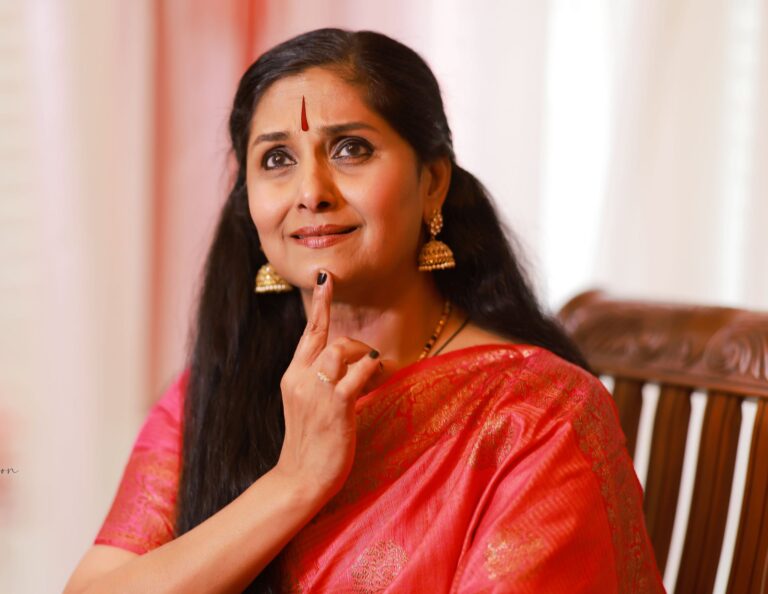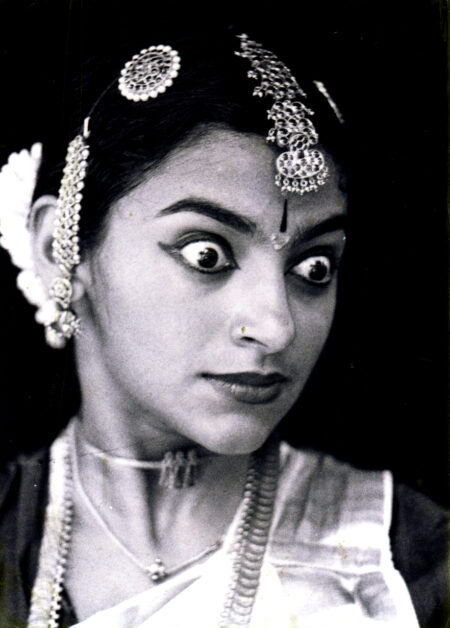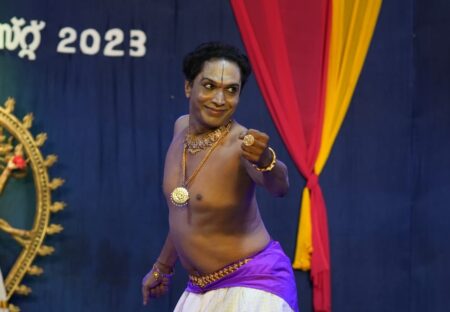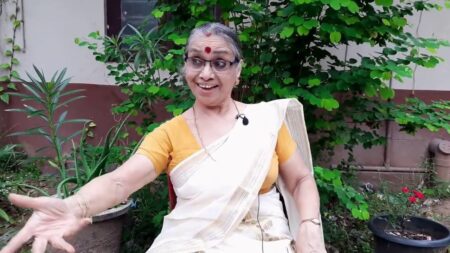Sunanda Nair’s life around dance came to a standstill several times. She was able to find her feet back to it, every single time.
Even though Mohiniyattam has seen its fair share of existential struggles over the years, several artistes are painstakingly preserving and building the art form.
Dr Sunanda Nair, a Houston-based dancer, is one of them. Through her dance school, Sunanda Nair Performing Arts Center (SPARC), which was set up in 2000, Nair is promoting Mohiniyattam in the US. She earned her doctoral degree in Mohiniyattam in 2016 under the guidance of Dr Kanak Rele. For someone who has been practicing dance for nearly five decades and teaching dance for four decades, Nair exudes nothing but sheer humility and a zeal to learn more. Nair speaks to India Art Review’s Sanjitha Rao Chaini on her life as a dancer, and more. Excerpts:
How did you start teaching dance in the US?
I moved to the US in 1999. It was an unplanned move. Moving out of India was something I had never imagined. I was literally living and breathing dance in India. I did my undergraduate and master’s degree in Dance from Nalanda Nritya Kala Mahavidyalaya in Mumbai (affiliated to University of Mumbai). I had taught at my alma mater after my master’s degree for nine years. So when I moved to the US, I thought I would never take up dancing again. But eventually I did.
You could call it a coincidence that we relocated to New Orleans during the Onam season. The ladies who knew of me approached me to help them with local community events. Around the time we moved, communication was limited, and information about dance schools or the Indian diaspora was limited. So, I couldn’t refuse their request. Eventually, they even asked me to perform at their function, and I agreed. I performed an Ashtapadi. After the event, people started enquiring if I could teach their kids as well. That’s how I started teaching dance in the US.
But unfortunately, in August 2005, Hurricane Katrina destroyed everything we had built. Our house was flooded, and we had to relocate to Houston. It took us a year to rebuild our lives in a new place. Again, I started from the scratch and started performing, choreographing, teaching dance in Houston.
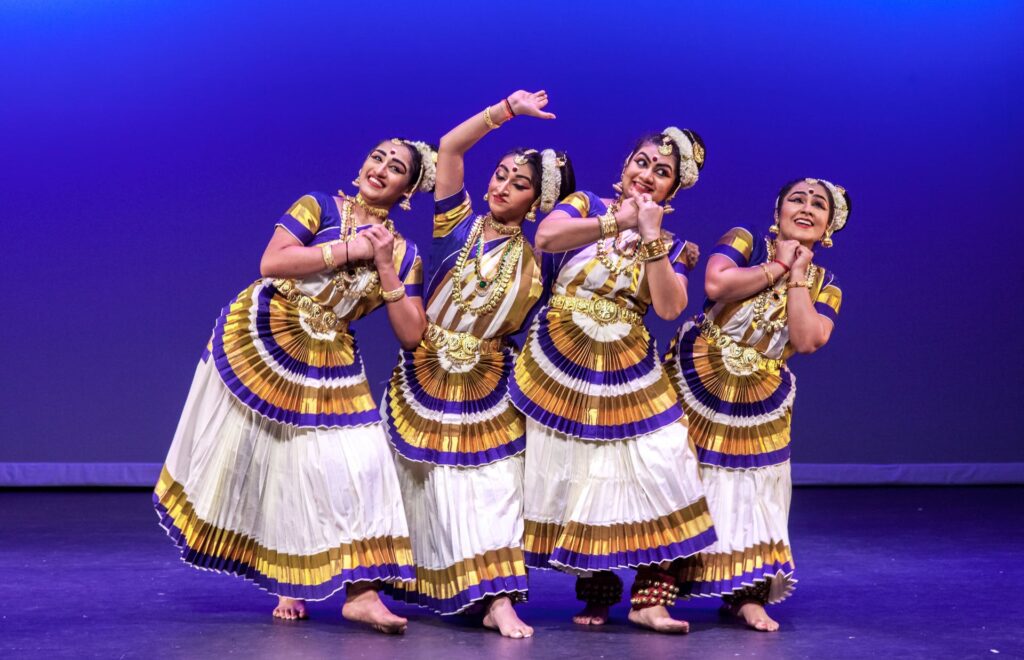
A group performance by the students of SPARC; Photo courtesy: Sunanda Nair
What is the nature of interest you are seeing among people towards learning Mohiniyattam in the US?
I started teaching Bharatanatyam initially and then gradually people started taking interest in learning Mohiniyattam as well. In the US, I have seen most Malayali parents encourage their daughters to learn at least one Mohiniyattam item to be able to dress up elegantly in the costume. The Mohiniyattam costume is not only beautiful but also graceful and very aesthetic. So, having a teacher readily available to teach this style was more than welcome in the US. I have never had any dearth of students wanting to learn Mohiniyattam. I train Mohiniyattam dancers who are Maharashtrians, Gujaratis, Tamilians and students from several other Indian states as well. The beauty of the art form has spread worldwide.
In fact, in New Orleans, I taught Mohiniyattam to aspiring American students. Some of them started taking lessons out of curiosity towards the dance form. They used to ask me, ‘I don’t really get the name of your dance form, it is one of those dances that is very graceful. And you wear something like a white costume. What is it?’
When I came to the US two decades ago, there wasn’t anyone who had done a full-fledged two-hour Mohiniyattam performance in dance festivals. I must have been one of the first people to start the trend in the US and now we do have festivals that include Mohiniyattam as well. My students and I were one of the first people who did an entire Mohiniyattam margam in the US that too with a live orchestra.
Eminent dancer Kanak Rele is your mentor and guide. Could you describe the journey of your guru-shishya relationship?
The guru-shishya parampara (tradition) in India is an ancient, valuable and irreplaceable aspect of our culture. We are taught from a very young age that the bond between a teacher and a student is pure and sacred. As I progressed in my quest to learn dance, I realized the importance of the role of a guru. The trust you place in your teacher or guru is unlimited and this is my strength and my belief.
I joined Nalanda in June 1985 and Dr Rele used to take all my classes. She had a very holistic and scholarly approach to dance, which was an eye opener for me. Until then, my dance lessons and exposure were mostly practical. But joining Nalanda was like opening a new chapter in my life.
Dr Rele is the first person to earn a PhD in Mohiniyattam in India. For her, every gesture and every move I made had to follow the laws of body kinetics, every gesture had to be perfect and follow the nuances of the dance. I couldn’t have been more blessed than being her direct disciple.
During my postgraduation at Nalanda, I chose Choreography as my specialization because at that time I realised that I was inclined more towards performance than being a research scholar. Dr Rele, being my teacher, also encouraged me to perform. She told me not to think about doing any kind of research work at that time and encouraged me to focus and practice my art and that I could take up research at a later stage. So, I took up performance and teaching at that point. Dr Rele is not just a great philosopher and dancer; she is also a great human being who guides me not just in my professional life but also in my personal life.
Many say Mohiniyattam is a solo dance form. Do you agree?
I don’t agree Mohiniyattam has to be a solo dance art form. In fact, I have choreographed a few group choreographies and several group productions, and they have been critically acclaimed too. I have also choreographed a Mohiniyattam piece as a dance dialogue between two nayikas (female protagonists). Any classical art form can be performed both solo and group. There are relevant themes and principles that you need to follow and adhere to.
Also, in a group production, one is allowed to and can take the liberty or freedom to incorporate any other classical or folk-art form or movements so long as it is justified in the theme or by the character portraying them. One can also opt for an all-exclusive Mohiniyattam style presentation in group or thematic performances. So, the art form is not restricted to only a solo presentation.
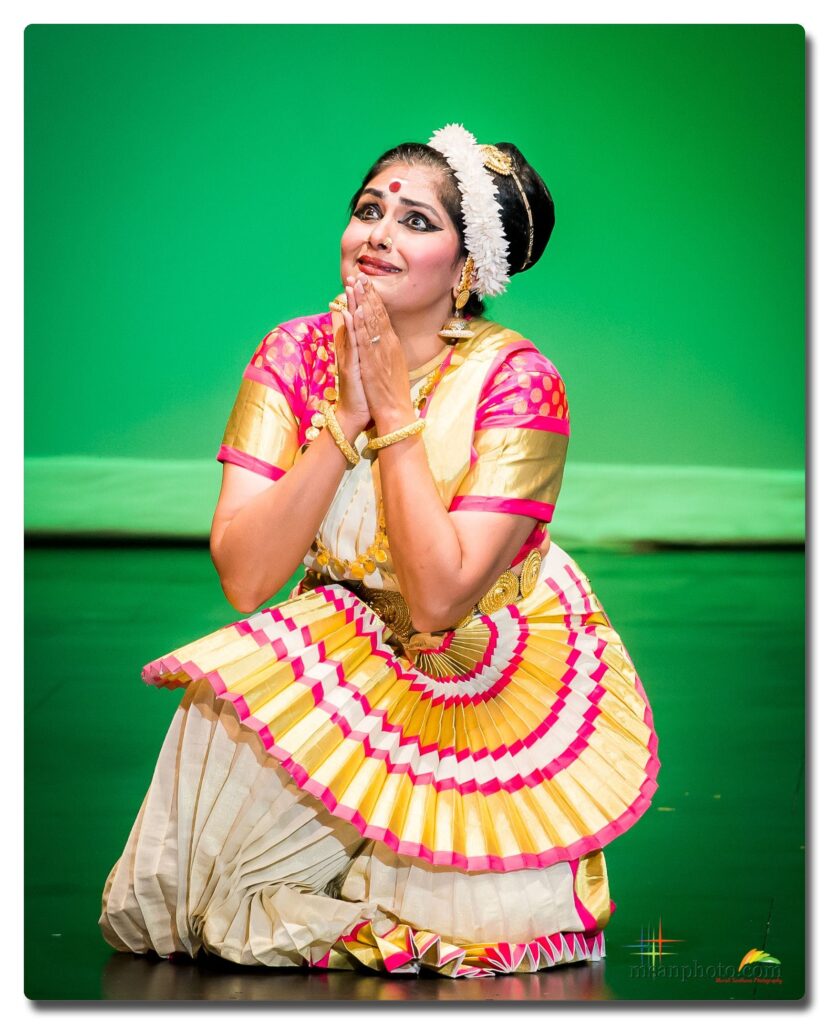
Sunanda Nair; Photo credit: Murali Santhana
You started learning Kathakali at age 10 and Bharatanatyam at 6. When did Mohiniyattam arrive?
Much later. I was already known in Bombay for performing Bharatanatyam. Pakshe (But), I thought being a Malayali, I should learn Mohiniyattam as well. I saw Dr Rele’s performance on Doordarshan. She performed Ganapati, Ashtapadi, Ashta Nayikas and similar items. Her approach to the dance was so attractive and that made me think that this is exactly what I want to learn. To be honest, I was inclined towards graduating in Law and had started my law studies. But I realized that dancing and learning dance from Dr Rele were too great an attraction to focus on anything else.
Beyond Kerala or South India, Mohiniyattam is still not a popular classical art form.
I have students who are senior performers in Mohiniyattam and hail from all over the world. All of my contemporaries are also doing a great job in popularizing it. But we have to be a little careful with Mohiniyattam; it cannot be perceived to be a lesser art form than others. The teachers should make sure their own study of the art form is correct and, this in turn, ensures they are imparting the knowledge of Mohiniyattam to their students in the right manner.
I also recommend introducing topics that are more challenging and at the same time pay close attention to even the smallest of details in the presentation. It is important for teachers to communicate these practices with the students and help nurture them. For instance, the topics we select, the substance, the lyrical content, the musicality and the strength in presentation are crucial. The in-depth study of the dance form should reflect in your presentation. Else, we run the risk of sidetracking the art form if we are not able to maintain the path set out by our seniors. Our goal should be to add more to that. Our seniors painstakingly revived Mohiniyattam, and now their struggles have made it much easier and opened innumerable paths for us to pursue. It is our turn to dig deeper into the texts, the lyrical content and also be very careful with the choreography. The students pursuing this dance form are the future of Mohiniyattam.
How disciplined should a student or teacher be while learning Mohiniyattam?
For someone to excel in an art form, a lot of discipline, honesty and sincerity is mandatory. One has to be completely disciplined and honest with your approach, study, learning and practice. You don’t do something because you want to gain something, you do something because you are happy doing it. If you are thoroughly happy, it reflects in your work. This kind of discipline comes with years of study.
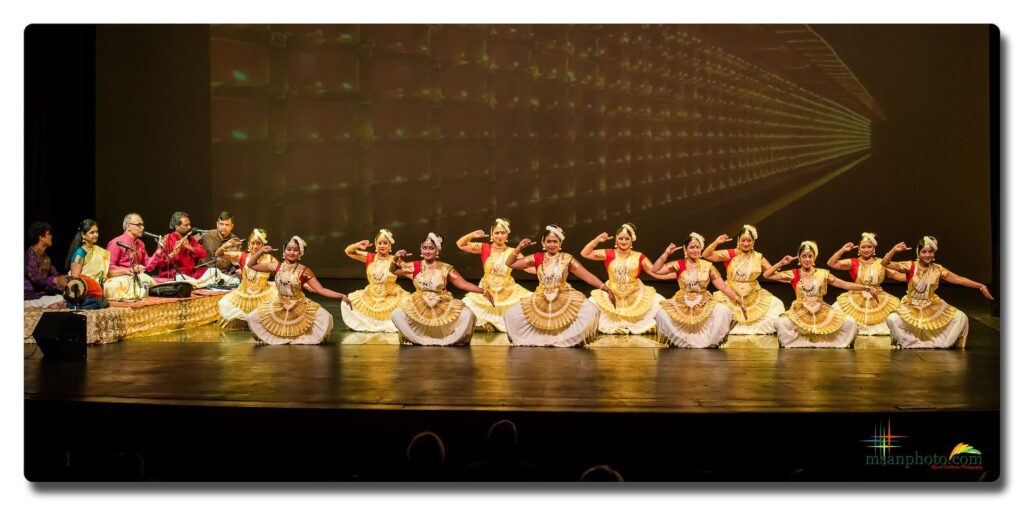
A group performance by the students of SPARC; Photo courtesy: Sunanda Nair
How has Covid-19 changed your life as a performer and as a guru?
I made the best use of the pandemic period as there was no traveling and I could dedicate more time to teaching and choreography. During the lockdown, we initiated ‘Arpanam‘, an online dance festival, where we invited senior and amazing young stars of today’s generation to participate. I presented about 60-70 artistes in total in this ongoing online dance festival. We also hosted a programme called ‘Vachika. Here we interacted with award-winning senior dancers, scholars, critics on Zoom calls. These interactions gave a world of exposure to my students into dance and the lives of artistes.
Write to us at [email protected]

